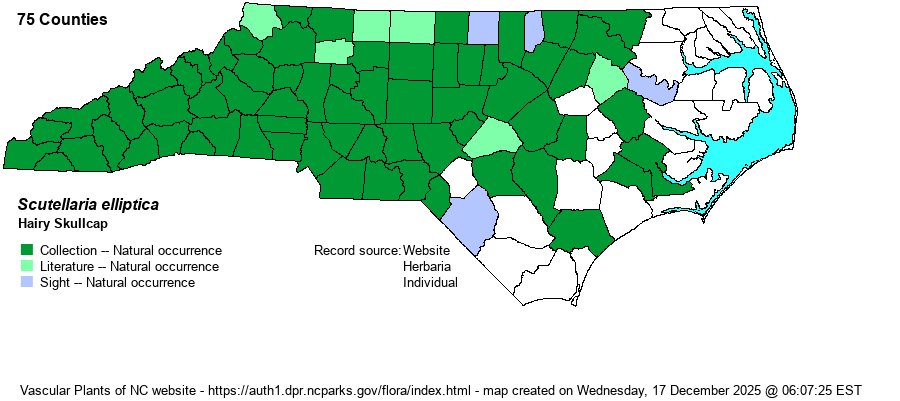| Author | Sprengel | |
| Distribution | Throughout the Piedmont and Mountains; sparingly occurs over the western and central Coastal Plain, but absent from the eastern counties and perhaps a few southern ones.
This is a widespread species in the Eastern states, ranging from southern NY and MO south to northern FL and eastern TX. | |
| Abundance | Frequent to common in the Mountains and Piedmont; infrequent in the western and central Coastal Plain, and rare to absent in the eastern counties and the far southern counties. It is somewhat outnumbered over the state by S. integrifolia. | |
| Habitat | This is a widespread species of dry to mesic forests, more so in small openings, edges, and roadbanks. It is not normally found on rich forested slopes or bottomlands. | |
| Phenology | Blooms from late May through June, and fruits from June into July. | |
| Identification | This herb has a usually unbranched stem, reaching about 1 foot tall. It has only a few scattered pairs of leaves, each one being ovate to deltoid, about 2 inches long and about 1-inch wide, with a short petiole and a nearly truncate base. The margins are crenate with scallops, and the tip is somewhat rounded. From several upper axils and the top of the stem grow a few short racemes, of lavender-blue flowers, each one the typical hooded form of members of the genus, and about 3/4-inch long. This is the only NC Scutellaria with rather small (about 2 inches long at most) and rhombic to almost triangular leaves and scalloped margins. This species is often found on walks in woodlands and edges in the Mountains and Piedmont, as is its cohort -- S. integrifolia. | |
| Taxonomic Comments | Weakley (2018) lists two varieties as occurring in the state. The nominate one -- S. elliptica var. elliptica --is numerous across most of the state, whereas var. hirsuta is less numerous and mostly found in the mountains and Piedmont.
| |
| Other Common Name(s) | None | |
| State Rank | S5 | |
| Global Rank | G5 | |
| State Status | | |
| US Status | | |
| USACE-agcp | | |
| USACE-emp | | |

